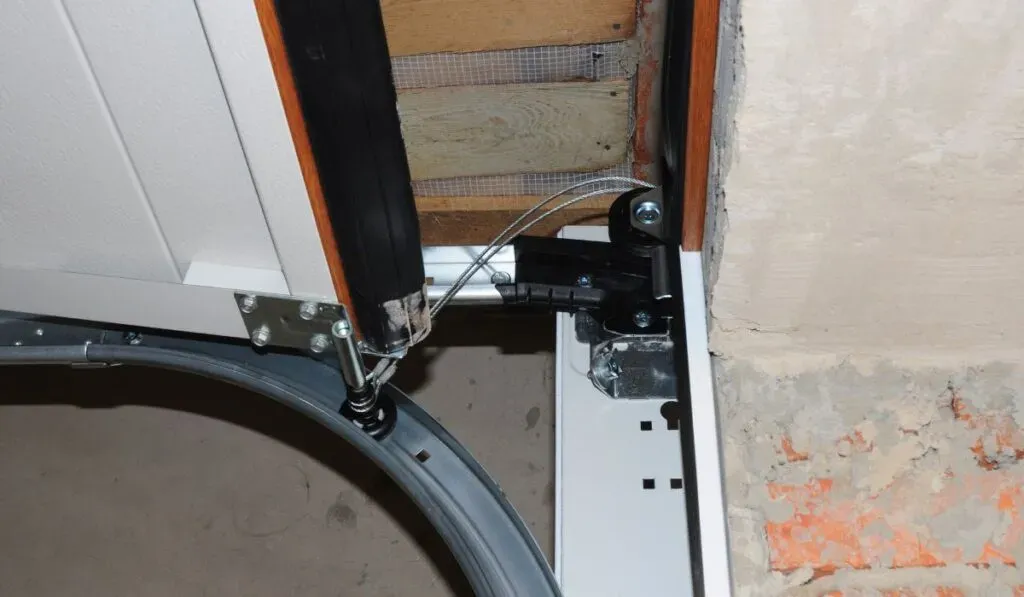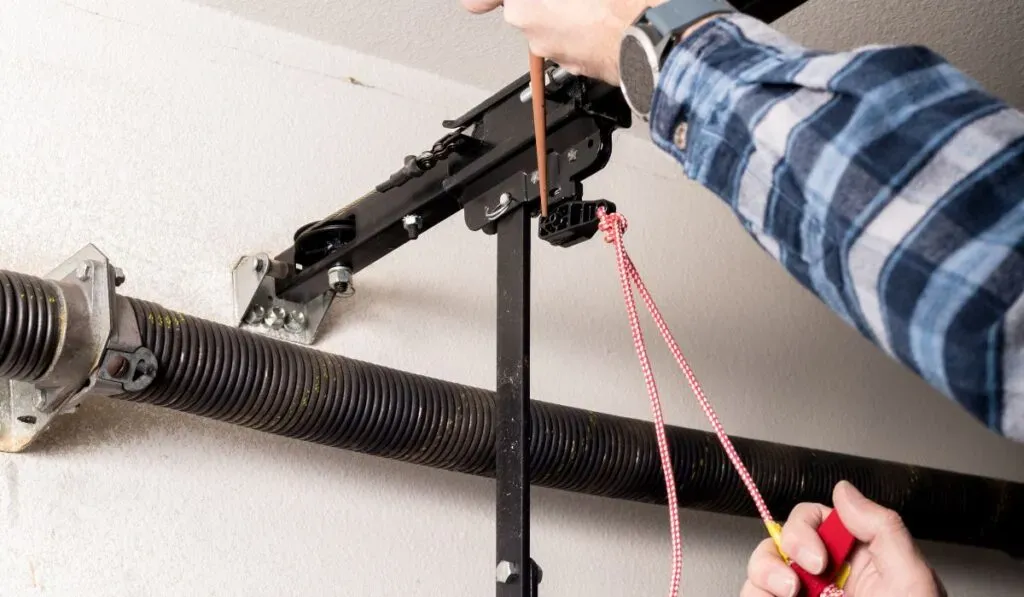
Garage door slammed shut issues often point to either a broken garage door spring or a cable failure, easily spotted through signs like a torsion spring gap or a frayed, loose cable. Knowing how to tell if a garage door spring is broken can help address the problem quickly and reduce risks of lifting the door incorrectly.
Why Did My Garage Door Slam Shut? Understanding the Common Causes
When your garage door slams shut, it can be scary. It usually means something’s wrong mechanically. This can cause a safety hazard. Here are some common reasons why:
- Heavy Garage Door: If the springs or cables fail, the heavy garage door might close suddenly and slam down.
- Jerky Movement: Weird jerks or sudden stops can mean there’s a problem with the springs or tracks.
- Unusual Noises: A sudden loud bang often points to a broken spring or cable failure.
- Slow Garage Door Opening: When the door opens slowly, it may struggle because some parts are damaged.
If you notice any of these signs, you should watch out. These problems increase the dangerous fall risk and can lead to accidents.
The Critical Roles of Garage Door Springs and Cables
Garage doors need springs and cables to work right. They help move the door up and down smoothly. Here’s what you should know:
- Garage Door Spring Break:
Torsion springs store energy when the door is closed. They release that energy to help lift the door. If a torsion spring breaks, the door can slam shut suddenly. - Broken Garage Door Spring Symptoms:
Look closely for gaps in torsion springs or damage on extension springs. Those are clear signs a spring is broken. - Garage Door Cable Failure:
Cables hold up the weight of the door as it moves. If a cable frays or snaps, it could cause a dangerous fall. - Extension Spring Damage:
Extension springs stretch as the door moves. Any damage here will make your garage door act up.
Knowing these parts’ roles explains why fixing them fast is key to safe garage door use.
If your garage door slammed shut out of nowhere or if you think your springs or cables are acting weird, don’t wait! Call us at 24/7 Garage Door Repair for help — get your quote today!
Broken Spring vs. Cable Failure – Spotting the Key Differences
Garage doors need springs and cables to work right. If you spot a garage door spring break or a cable failure, you’ll know what needs fixing.
- A broken garage door spring often means the torsion spring snaps in half with a clear gap.
- Extension springs can get damaged too, but they’re easier to see.
- Garage door cable failure shows as frayed, loose, snapped cables, or cables that came off their drums; for swift resolution, our expert garage door cable repair can help restore proper function.
Both cause uneven door movement but look and sound different.
People sometimes mix up cable fray with a broken spring. So look closely before deciding.
Diagnosing a Broken Garage Door Spring – What to Look For
Watch for these signs if you think the spring is broken:
- A visible gap in the torsion spring where it snapped.
- The door feels very heavy—sometimes you just can’t lift it.
- The spring looks snapped in half.
- The door slips or moves unevenly when opening.
If you notice any of these warning signs, it might be wise to schedule a professional garage door spring replacement to ensure your door operates safely.
Loud Bang or Snap Noise – The Sound of Spring Failure
That loud bang you hear? It’s usually the torsion spring breaking. The tension inside snaps all at once.
Right after that noise:
- The door might jerk as weight shifts suddenly.
- Don’t try lifting the door by hand—it could fail worse.
This loud snap is very different from softer clicks made by cables breaking.
Garage Door Smashed to the Ground or Falling Quickly
If your garage door falls fast without control, that’s bad news. A broken spring can cause this sudden drop.
You might notice:
- The door dropping fast while closing.
- A hard slam when it hits the ground.
- Damage at the bottom panel from the fall.
Need help? Call us anytime! We offer 24/7 emergency service for all garage door repairs including broken springs and cable issues. Reach out now for quick support!
Broken Spring vs Cable Issue – Safety Risks

- Broken Spring: The door loses its balance and might slam shut without warning.
- Cable Failure: The door lifts unevenly, and snapped cables can snap back sharply.
Both problems make opening the door by hand dangerous because the door’s weight and tension get all off.
Check your garage door manual for safety warnings. Don’t ever force open a broken door.
The Risks of Lifting a Garage Door with a Faulty System
Trying to lift a garage door when its system is broken? That’s full of risks:
- Dangerous Fall Risk: The heavy door can suddenly fall if tension is gone.
- Jerky Movement: The door may move unevenly and cause accidents.
- Burn Out Opener Motor: Using the opener on a stuck or unbalanced door can ruin the motor.
- Heavy Door Feeling: Without springs, you lift the full weight—often over 100 pounds—which can hurt you.
These dangers show why fixing problems fast is really important.
Crucial Steps for Securing a Damaged Garage Door
- Stop Using the Door: Don’t try to open or close it until fixed.
- Secure the Door Safely: Lock pliers on tracks below rollers can stop it from moving by accident.
- Engage Emergency Release Carefully: Pull the manual release cord only if you know how; wrong moves can make things worse.
- Call Professionals Immediately: Fixing springs and cables yourself is risky because they hold a lot of energy and can cause serious injury.
DIY vs. Professional Garage Door Spring/Cable Repair – Making the Right Choice
Fixing garage door springs or cables is not easy. It takes skill and special spring repair tools. Some people try DIY repair to save money. But garage door repair professionals do it safer and better. These garage door expert technicians follow garage door safety warnings closely.
If you try a DIY repair, you might miss damage signs or install parts wrong. That can cause bigger problems later. Professionals spot issues fast and fix them right so your door runs smooth and safe for years.
Calling a pro lowers chances of injury or gear damage. If you don’t know how to fix broken springs or cables, call trained techs who know all the safety rules.
When to Call 24/7 Garage Door Repair – Our Expert Recommendation
Some situations need fast help from reliable garage door repair services with professional garage door technicians on call. Reach out right away if you see:
- Loud bangs that sound like a broken spring
- Frayed or loose cables showing during inspection
- Doors slipping oddly or won’t stay open
- Lifting the door by hand feels much heavier than usual
Our team answers quickly day or night for emergency garage door repair near you. Trust expert techs who put safety first every time.
Preventing Future Garage Door Problems – Maintenance Tips from 24/7 Garage Door Repair
Keeping your garage door running smoothly means you should invest in regular garage door maintenance to prevent future issues and ensure lasting performance. Using the right garage door lubricant stops parts from wearing out too fast. Check your door often for any damage. Catching problems early saves money and trouble later. Always take garage door safety precautions, like turning off power before checking parts. Don’t try to fix springs or cables by yourself—they can be dangerous.
A quick garage door health check means looking at the tracks to see if they line up right. Test the spring tension and look for frayed cables or rollers that don’t roll well. Doing these checks often keeps your door safe and helps avoid sudden breakdowns that could hurt people or damage things.
Don’t wait—call now for help! Get a free quote or book same-day service with 24/7 Garage Door Repair pros ready when you need them.
Ready for help? Call our hotline anytime for fast answers and trusted service. Get a free quote or book same-day repair from pros who care about your safety all day and night!
Essential Garage Door Safety & Maintenance Tips
- Always check for garage door coil gaps, which indicate spring breaks.
- Use proper garage door winding bars for spring tension adjustments only.
- Regularly inspect garage door safety cables to prevent cable snapped accidents.
- Test garage door safety sensors monthly to avoid unexpected closing risks.
- Maintain proper garage door tension adjustment to ensure smooth lifting.
- Avoid DIY repairs without correct spring repair tools, as springs carry high tension loads.
- Watch out for signs of garage door panel damage, which could affect balance and operation.
